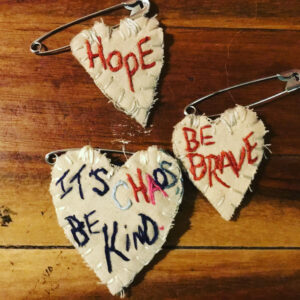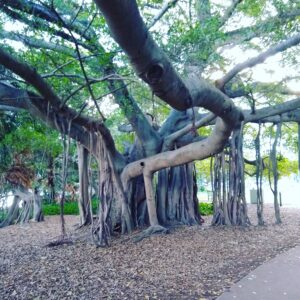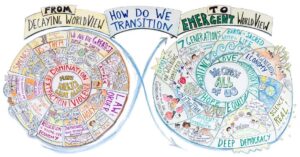Have you ever in your life, suffered in silence, screaming inwardly, the fractured pieces of your life crumbling, barely functioning, but out of fear, guilt and shame you internalized enormous feelings and went about your daily life pretending to be “fine”?
Raise your hand please, both of mine are in the air waving around frantically with the recognition of this situation.
Finding yourself here in pain, has anyone ever reached out to you here in your sad state of affairs and offered a lifeline in the form of a simple act of kindness?
For me, this has been life-changing. A sense of someone not solving your problems, but offering to ease your load and walk beside you in your suffering in a way that honors your worth and isn’t about keeping score.
This, my friends, is what you call compassion.
Recalling these acts on a dark winter night in the midst of a pandemic and the still polarized political environment, I can feel my heart expand and warm with this awareness.
There is the friend who saw me struggling as a young mother in a marriage challenged by addiction, poverty and then divorce and single motherhood who said to me, “I see you. I have known this struggle. I will help.” She helped, continues to help, and she and her husband became family.
There are the friends who did fundraisers for us in 2000 when we lived for four months without income during my daughter’s birth and hospitalization. Concerts, bake sales and basket parties were organized while we were across the state, separated from our community, and yet, our community still showed up for us.
During this time, there was the wife of a high school friend, a woman I had never met that weekly sent me cards with heartfelt handwritten words of encouragement. Years later, meeting her in person, she had only a vague remembrance of this regular outreach, while to me, this was a lifeline at the time. She has become a dear friend.
In 2011, after another long hospital stay with my daughter having extensive surgery with many complications, we returned home with a hospital bed in the living room and a lengthy recovery to friends showing up with food, to do laundry, to the entire elementary school that my daughter attended sending hand made cards by all the children (obviously it was communicated to the children that Riley had been in the hospital and liked mermaids as many of the cards had rendered images of bloody, maimed, mermaids, mermaids in ambulances and having surgery.)
Recently, during the pandemic when I lost most of my income and was not able to access unemployment, yoga students, friends, and members of my faith community helped support our family. This put food on our table and paid our bills. Deeply humbled, this generosity allowed us to trust and pay what we had forward to those less fortunate than ourselves.
Lend a Hand in Laurel Highlands was an effort created by several of us when the pandemic hit to connect those with resources to those without. Little libraries everywhere became mini food banks for canned goods. People offered supports, people asked for supports, teachers read books online to their students. Musicians offered concerts.
This sense of being cared for and caring for others and for the planet herself, weaves us together, connects us via the heart-space through action grounded in compassion, without need for recognition or accolades.
To me, these interactions open up the world through the heart. They cut through the fear that tells us to isolate and only care for our immediate interests and those who are in our inner circle.
Widening our circles, expanding our circumference of belonging. This is how we move from a culture that tells us we are separate from one another to co creating social and economic spheres of reciprocity and mutuality.
Many current studies drawing from science and indigenous wisdom including an article in Smithsonian Magazine that featured the work of German Forester Peter Wohlleben and his book The Hidden Life of Trees: What They Feel, How They Communicate, indicate what the title implies. Trees are alert, social and intelligent. They share nutrients and information through underground fungal networks which scientists call mycorrhizal networks which have a symbiotic relationship with the trees, while the fungi link and connect the network of trees, the fungi consume sugar that the trees photosynthesize from the sun. This fuels the fungi, which scavenges the soil for nitrogen, phosphorous and other mineral nutrients, then absorbed and consumed by the trees (Do Trees Talk To Each Other? Smithsonian Magazine, March 2018.).
This is a lovely distribution of resources.
Biomimicry, adopting processes from the natural world into human engagement draws from indigenous teachings as well as Joanna Macy’s The Work That Reconnects and Adrianne Maree Brown’s Emergent Strategy. There is much wisdom here.
Feeling into the collective instead of isolating ourselves into silos where we think we have to figure everything out and always be fine, productive, able to handle any and everything and suck it all up.
Feeling into the collective where grace is found in receiving and a fluidity to sharing, offering, being in solidarity that becomes effortless, contains mutual respect and has space for individuality and diversity.
We can lean more into these spaces and reduce the amount of suffering we take on when we need to ask for help.
We can offer support and solidarity without keeping score or elevating giving over receiving and requiring validation from the act of giving.
Living and leaning more into the symbiotic nature of how trees coexist, how ecosystems flourish as living examples of how we as humans can be well and connected to each other and all life.
The Way Forward.






